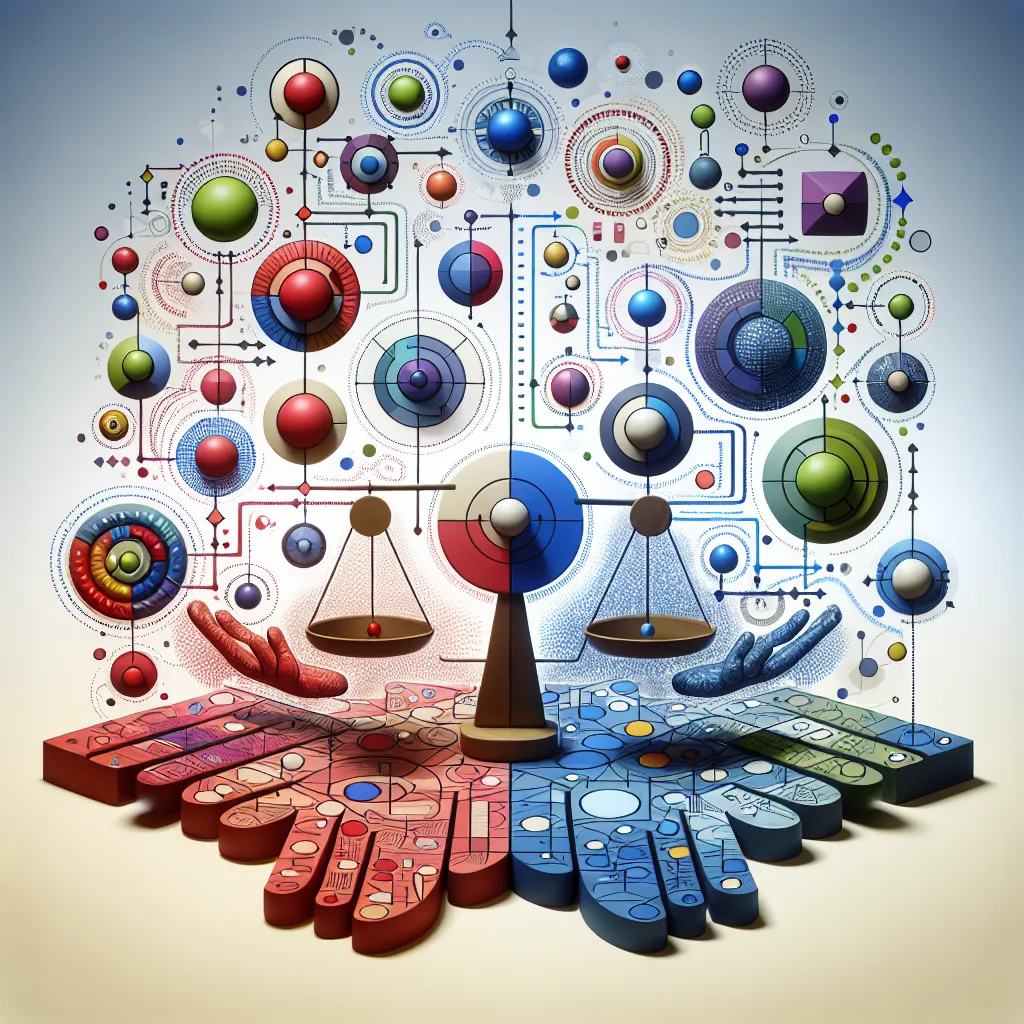In today’s interconnected world, understanding the nuances of relationships is more important than ever. Relationships, whether personal, professional, or social, are an intricate dance of interaction among diverse personalities. The harmonization of these relationships can lead to a balanced, fulfilling life, as well as a productive work environment. This article explores the fascinating dynamics of how different personality types interact with one another, providing insights to help people connect and thrive in their relationships.
Personality is the unique set of characteristics, behaviors, and thought patterns that define an individual. The study of personality has led to the development of various typologies, such as the Myers-Briggs Type Indicator (MBTI), the Enneagram, and the Big Five personality traits, among others. Understanding these typologies can offer valuable revelations about how we communicate, work, and form bonds.
The Myers-Briggs Type Indicator, one of the most widely used personality tools, categorizes individuals into 16 different types based on four dichotomies: Extraversion/Introversion, Sensing/Intuition, Thinking/Feeling, and Judging/Perceiving. Each personality type has its strengths and preferences that affect how they relate to others. For example, extraverted types may enjoy social settings and engage more openly, whereas introverted types may prefer deep, one-on-one conversations. Sensing types tend to focus on concrete details, while intuitive types often look at the big picture—a difference that can lead to both complementarity and conflict in teamwork and decision-making.
Harmony in relationships often requires an understanding of these preferences. When individuals recognize the innate tendencies of their counterparts, they can tailor their communication and interaction strategies to facilitate better understanding and collaboration.
Another profound system, the Enneagram, identifies nine personality types, each with distinct motivations and worldviews. Ranging from the reformer type, who values order and integrity, to the peacemaker type, who seeks inner and external peace, these categorizations can reveal deeper layers of interpersonal dynamics. By comprehending the core motivations behind people’s actions, individuals can empathize more effectively and navigate relational challenges.
For instance, in a relationship where one partner is an Enneagram type two (the Helper) and the other is type eight (the Challenger), knowing these dynamics can illuminate the reasons behind each person’s behavior. Type twos often look for ways to be supportive and can struggle with acknowledging their own needs, whereas type eights assert their independence and can be confrontational. These insights can help partners appreciate their differences and find ways to support and respect one another.
The Big Five personality traits offer another perspective, focusing on five broad dimensions: openness to experience, conscientiousness, extraversion, agreeableness, and neuroticism. This model underlines how compatibility and friction can emerge from varying levels of each trait. Individuals low in agreeableness might find conflict resolution challenging, while those high in openness might inspire creativity and new ideas within a group setting.
In professional settings, the interaction of different personality types can significantly affect team dynamics and performance. Diverse teams may experience friction when members with a high degree of conscientiousness, who are naturally detail-oriented and methodical, have to work with those who are more laid-back or spontaneous. However, when managed well, this diversity can become an asset. Leaders and managers can harness the strengths of each personality type to complement one another, driving innovation and achieving common goals.
Moreover, relationships within families are also influenced by personality differences. Parenting styles, for instance, can be shaped by personality; an extroverted parent might encourage their child to engage in social activities, whereas an introverted parent might support solitary and introspective pursuits. By understanding their own and their family members’ personalities, individuals can foster a family atmosphere that nurtures everyone’s growth and wellbeing.
It’s important to note that although personality types provide a framework to understand tendencies and behaviors, individuals are complex and dynamic. Personality is not deterministic, and understanding personality types should not lead to pigeonholing or stereotyping. Instead, these frameworks should be used as tools to facilitate richer, more harmonious relationships by acknowledging and valuing unique qualities in ourselves and others.
Communication is a central aspect of harmonizing relationships among different personality types. Clear, empathetic communication that takes into account each person’s style can bridge misunderstandings and build stronger connections. For example, individuals who prefer direct communication may need to learn to soften their approach when dealing with sensitive types. Conversely, those who tend to be more indirect may need to practice being more assertive to ensure their needs are met.
Conflict resolution is another critical component in harmonizing relationships. Different personality types may have varying thresholds for conflict and different strategies for dealing with it. Some might confront issues head-on, while others may withdraw or compromise. Recognizing these patterns can guide individuals towards constructive ways to resolve disagreements without trampling on each other’s personality traits.
Emotional intelligence (EQ) also plays a crucial role in relationships. A high EQ can enable individuals to sense the emotions and needs of different personality types and respond with compassion and understanding. This sensitivity can foster an environment where all people feel heard and valued, paving the way for harmonious interactions.
In conclusion, harmonizing relationships across different personality types is a delicate yet rewarding endeavor. By gaining insights into the wide spectrum of human behavior through models like the MBTI, the Enneagram, and the Big Five, individuals can develop strategies for effective communication, conflict resolution, and emotional engagement that respect each person’s uniqueness. Whether in intimate relationships, social circles, or professional teams, understanding personality dynamics is key to building strong, lasting connections and creating an environment where everyone can thrive. In a world where diversity is the norm, embracing the intricate mosaic of personalities is not just beneficial—it is essential for harmony and success.



Leave a Comment